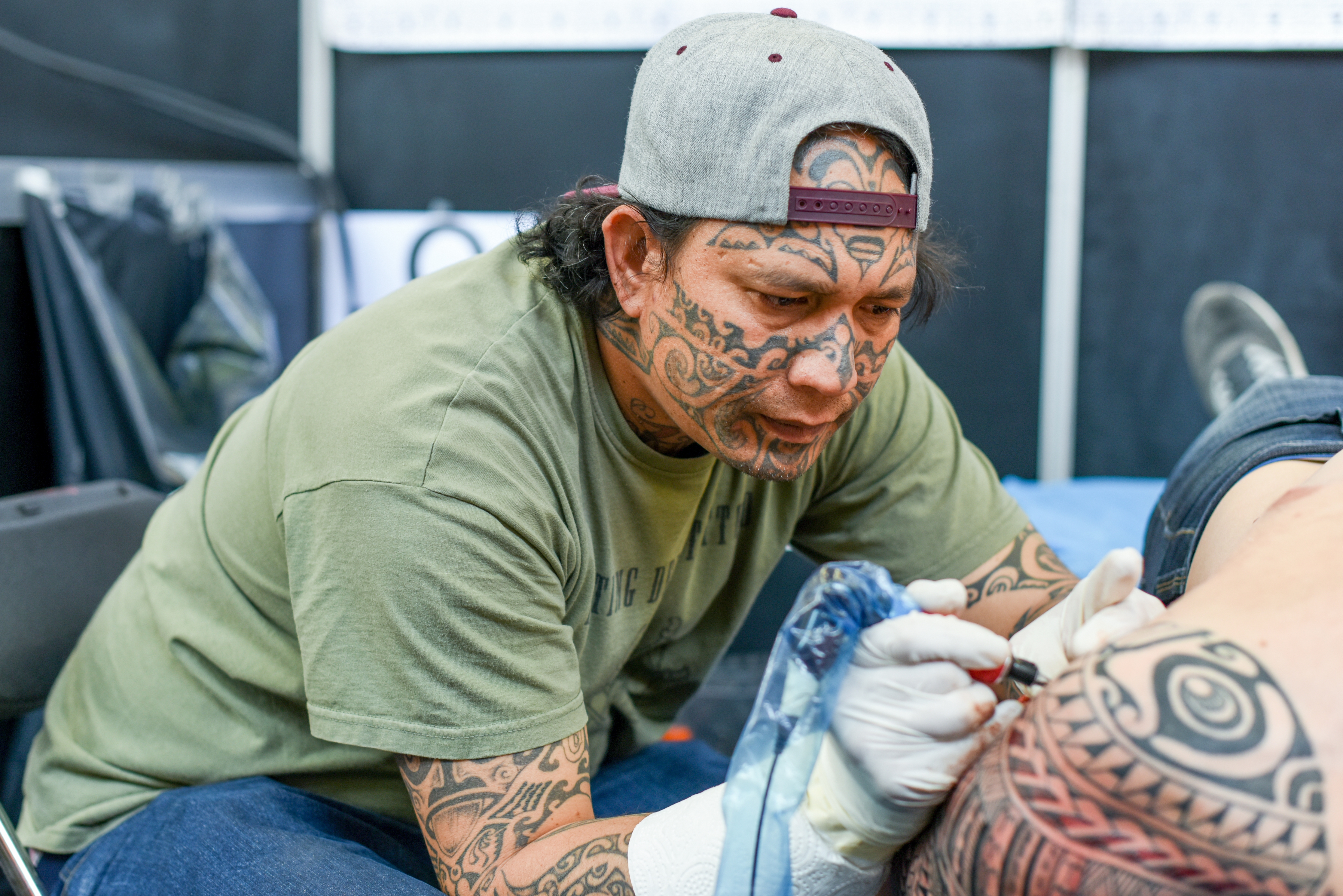Tā Moko is the traditional Māori art of tattooing. Māori are the Indigenous (native) people of New Zealand. Tattooing is a longstanding art form among Māori and other Polynesian peoples. In Māori culture, the moko (tattoo) is a symbol of personal identity. Tā Moko tattoos also express Māori ancestry and social status. Collectively, the moko form a record of Māori genealogy (family history). 
Māori men are given tattoos that cover almost the entire face, known as moko kanohi. Māori women usually receive smaller face tattoos, such as a chin tattoo, if they choose to undergo the Tā Moko process. Chin tattoos are called moko kauae. Men and women can also receive tattoos on their thighs or elsewhere on their bodies. Each moko is unique to the individual who wears it, though specific symbols and design elements may be reused. Most moko include curved shapes and spiral forms.
The traditional Tā Moko process differs from other forms of tattooing, in which the skin is pricked with needles to deposit small amounts of ink. Traditional Māori tattoo artists, called tohunga tā moko, use various tools called uhi throughout the tattooing process. One type of uhi cuts patterns into the skin. Another type of uhi applies pigment to the skin to create the desired design. The uhi method leaves a textured pattern on the skin that is distinctive to Tā Moko.
Following the British colonization of New Zealand, Māori were discouraged from practicing Tā Moko. By the late 1800’s, the practice of full-face tattooing had almost vanished. Tā Moko saw a resurgence in popularity in the late 1900’s and the 2000’s, however. Most modern Tā Moko artists apply traditional designs with electric tattooing tools.
